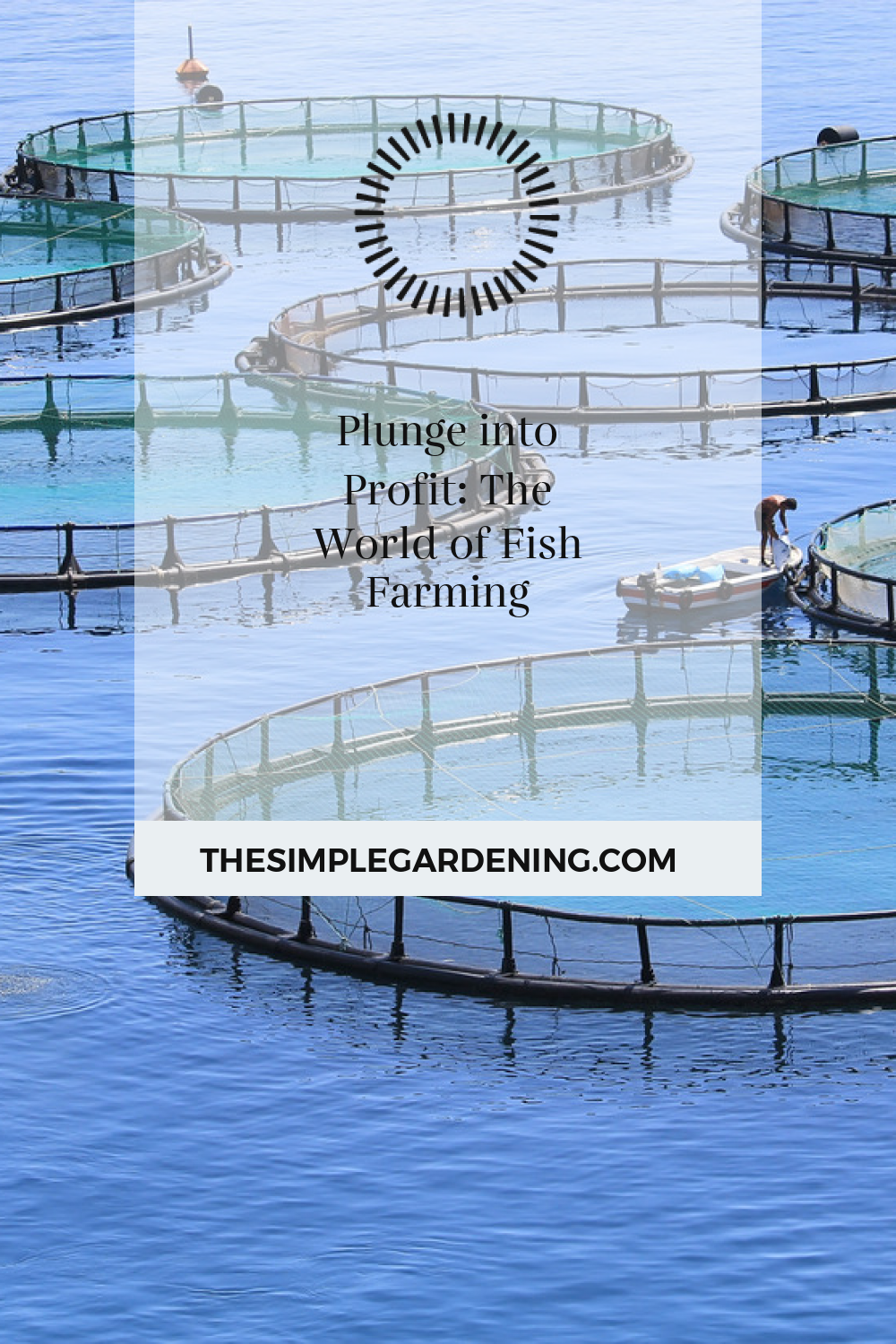Fish farming, also known as aquaculture, stands as a cornerstone in the global effort towards sustainable food production. In this article, we dive deep into the vast waters of fish farming, exploring its definitions, historical roots, environmental impacts, benefits, challenges, techniques, regulations, innovations, market trends, sustainable practices, and future prospects.
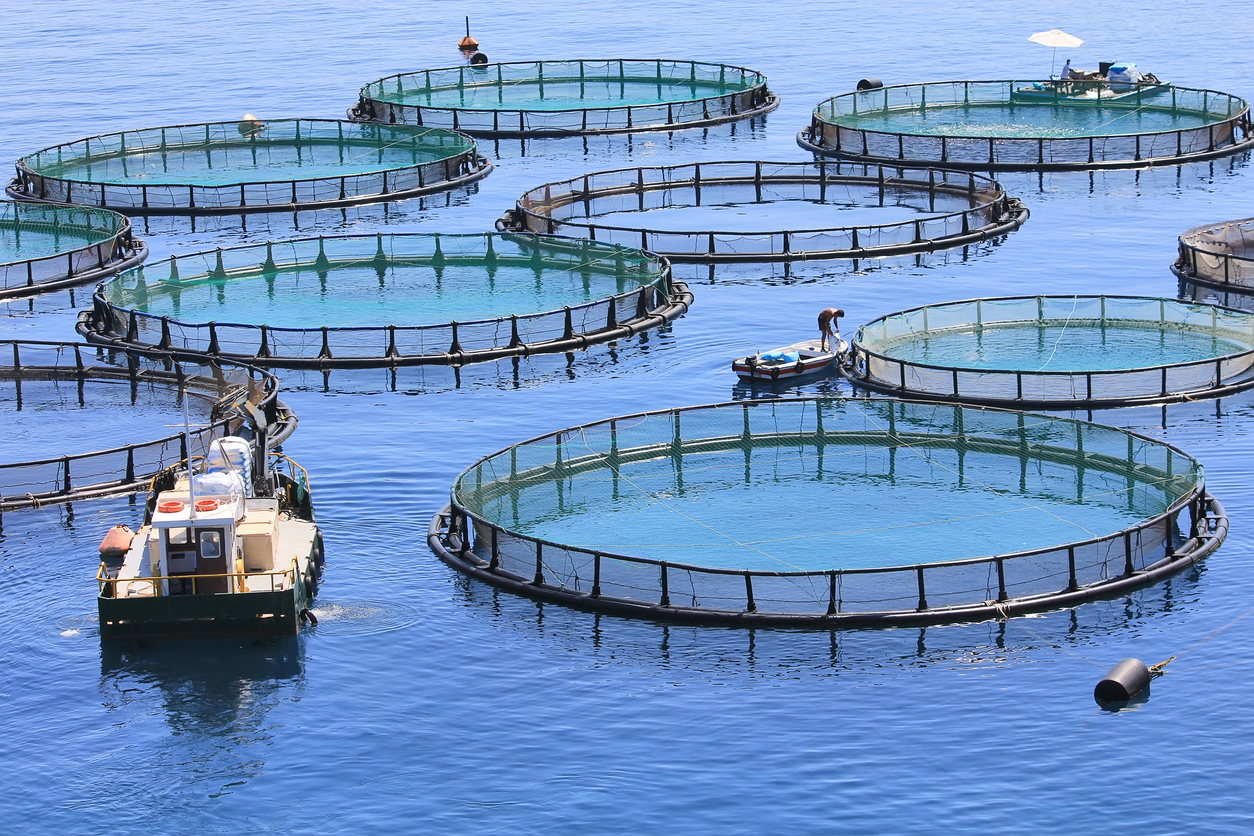
Source Image: www.wesleybaker.com
Definition of Fish Farming
Fish farming involves the controlled cultivation of fish species for various purposes, including food consumption, ornamental trade, and research. It encompasses a range of techniques and practices tailored to different aquatic environments and species requirements.
Table 1: Common Fish Farming Terms
| Term | Definition |
|---|---|
| Aquaculture | The farming of aquatic organisms such as fish, crustaceans, mollusks, and aquatic plants in controlled environments. |
| Mariculture | The cultivation of marine organisms in seawater environments, including offshore and nearshore operations. |
| Cage Culture | A method of aquaculture where fish are raised in floating cages or pens, usually in open bodies of water. |
| Pond Culture | The practice of raising fish in man-made or natural ponds, often utilizing water management and aeration systems. |
| Recirculating Aquaculture Systems (RAS) | Closed-loop systems that recycle and treat water for fish farming, minimizing environmental impact. |
Importance of Fish Farming for Food Security
Fish farming plays a crucial role in addressing global food security challenges by providing a sustainable source of protein-rich food. As wild fish stocks decline due to overfishing and habitat destruction, aquaculture offers a viable solution to meet the growing demand for seafood.
Table 2: Global Fish Production (2019)
| Region | Production (Metric Tons) |
|---|---|
| Asia | 84.4 million |
| Africa | 12.1 million |
| Americas | 7.7 million |
| Europe | 4.5 million |
| Oceania | 2.1 million |
Key Point: Aquaculture contributes significantly to global fish production, particularly in Asia, where it accounts for the majority of the output.
Historical Overview of Fish Farming Practices
The origins of fish farming can be traced back thousands of years to ancient civilizations such as the Egyptians, Chinese, and Romans, who practiced rudimentary forms of aquaculture for food and economic purposes. Over time, advancements in technology and scientific knowledge have revolutionized fish farming practices, leading to increased productivity and efficiency.
Table 3: Milestones in the History of Fish Farming
| Period | Milestone |
|---|---|
| Ancient Times | Earliest recorded instances of fish farming in ancient Egypt, China, and other civilizations. |
| Middle Ages | Introduction of freshwater fish ponds in medieval Europe for food production and recreation. |
| Industrial Era | Development of modern aquaculture techniques, including hatcheries, pond management, and feeds. |
| Contemporary | Adoption of intensive farming methods, recirculating aquaculture systems, and genetic improvement programs. |
Key Point: Fish farming has evolved from ancient practices to sophisticated modern methods, driven by technological advancements and scientific research.

Source Image: www.nationalgeographic.com
Types of Fish Farming
Fish farming encompasses a diverse range of techniques and practices tailored to different species and environments. Understanding the various types of fish farming is essential for implementing sustainable and efficient production systems.
Explanation of Aquaculture and Mariculture
Aquaculture refers to the farming of aquatic organisms in controlled environments, including freshwater and marine habitats. Mariculture specifically focuses on the cultivation of marine species in seawater environments, utilizing offshore, nearshore, and coastal areas.
Table 4: Comparison of Aquaculture and Mariculture
| Parameter | Aquaculture | Mariculture |
|---|---|---|
| Environment | Freshwater, brackish water, and inland areas. | Coastal, offshore, and open sea environments. |
| Species Cultivated | Freshwater fish, crustaceans, and mollusks. | Marine fish, shellfish, and seaweeds. |
| Production Scale | Varied scales, from small ponds to large farms. | Large-scale operations in open water bodies. |
| Environmental Impact | Impacts freshwater ecosystems and water quality. | May affect coastal habitats and marine ecosystems. |
Key Point: Aquaculture and mariculture are distinct yet complementary practices that contribute to global fish production and food security.
Distinction between Intensive and Extensive Aquaculture
Aquaculture operations can be classified into intensive and extensive systems based on stocking density, water management, and feed input. Understanding the differences between these systems is crucial for optimizing productivity and minimizing environmental impacts.
Table 5: Comparison of Intensive and Extensive Aquaculture
| Parameter | Intensive Aquaculture | Extensive Aquaculture |
|---|---|---|
| Stocking Density | High stocking densities to maximize production. | Low stocking densities to mimic natural conditions. |
| Water Management | Requires controlled water quality and circulation. | Relies on natural water bodies with minimal management. |
| Feed Input | Relies on commercial feeds and supplements. | Fish feed supplemented with natural food sources. |
| Environmental Impact | Potential for nutrient pollution and waste buildup. | Minimal environmental impact but may alter ecosystems. |
Key Point: Intensive and extensive aquaculture systems offer different approaches to fish farming, each with its advantages and challenges.
Overview of Offshore and Nearshore Mariculture
Mariculture operations can be conducted in offshore or nearshore environments, each presenting unique opportunities and challenges for fish farmers. Offshore mariculture involves farming in deep-sea locations, while nearshore mariculture utilizes coastal areas and sheltered bays.
Table 6: Characteristics of Offshore and Nearshore Mariculture
| Parameter | Offshore Mariculture | Nearshore Mariculture |
|---|---|---|
| Location | Deep-sea locations far from the coast. | Coastal areas, bays, and estuaries. |
| Species Cultivated | Open-water species such as tuna and salmon. | Coastal species including shellfish and seaweeds. |
| Infrastructure | Requires offshore structures and cages. | Utilizes coastal habitats and floating platforms. |
| Environmental Impact | Minimal impact on coastal ecosystems. | May affect nearshore habitats and marine biodiversity. |
Key Point: Offshore and nearshore mariculture offer distinct opportunities for cultivating marine species, each with its logistical and environmental considerations.
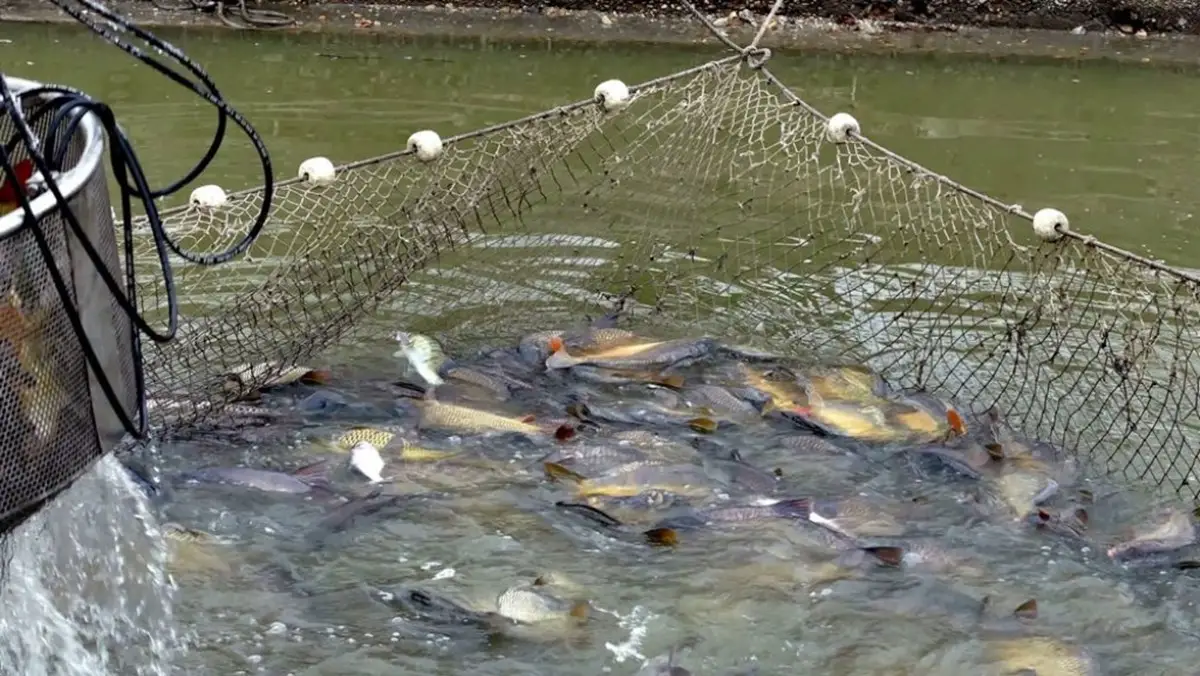
Source Image: krishijagran.com
Environmental Impact of Fish Farming
While fish farming presents significant benefits in terms of food production and economic development, it also poses environmental challenges that require careful management and mitigation strategies. Understanding the environmental impact of fish farming is essential for promoting sustainable practices and minimizing negative consequences.
Discussion on Pollution: Water and Soil
One of the primary environmental concerns associated with fish farming is pollution, particularly in terms of water and soil contamination. Intensive aquaculture operations can lead to the buildup of nutrients, organic matter, and chemical residues in water bodies, affecting water quality and aquatic ecosystems. Additionally, sedimentation and effluent discharge from fish farms can contribute to soil degradation in coastal areas.
Table 7: Environmental Pollution in Fish Farming
| Type of Pollution | Sources | Environmental Impact |
|---|---|---|
| Water Pollution | Excess nutrients, organic matter, and chemical residues from fish feeds and waste. | Eutrophication, algal blooms, and habitat degradation. |
| Soil Pollution | Sedimentation and effluent discharge from fish farms. | Soil erosion, loss of biodiversity, and coastal degradation. |
Key Point: Pollution from fish farming can have detrimental effects on water and soil ecosystems, necessitating the implementation of pollution control measures and sustainable farming practices.
Analysis of Habitat Destruction due to Fish Farming
The expansion of fish farming activities, particularly in coastal areas and sensitive habitats, can lead to habitat destruction and loss of biodiversity. Clearing mangroves and wetlands for aquaculture ponds, as well as the installation of offshore structures, can disrupt natural ecosystems and alter coastal landscapes.
Table 8: Impact of Fish Farming on Habitat Destruction
| Habitat Affected | Causes | Ecological Consequences |
|---|---|---|
| Mangroves and Wetlands | Conversion of natural habitats for aquaculture ponds. | Loss of biodiversity, coastal erosion, and flooding risks. |
| Coral Reefs | Damage from anchoring structures and sedimentation. | Coral bleaching, habitat degradation, and loss of marine life. |
Key Point: Habitat destruction resulting from fish farming activities can have far-reaching ecological consequences, emphasizing the importance of sustainable land use planning and conservation measures.
Examination of Escapes and Genetic Pollution
The escape of farmed fish into the wild poses significant risks to native ecosystems and wild fish populations. Farmed fish may compete with native species for resources, introduce diseases and parasites, and interbreed with wild populations, leading to genetic pollution and loss of genetic diversity.
Table 9: Risks Associated with Escapes and Genetic Pollution
| Risk Factor | Consequences | Management Strategies |
|---|---|---|
| Competition | Farmed fish outcompeting native species for food and habitat. | Ecological monitoring and habitat restoration efforts. |
| Disease Transmission | Spread of pathogens and parasites from farmed to wild populations. | Disease surveillance, vaccination, and biosecurity measures. |
| Genetic Hybridization | Interbreeding between farmed and wild fish populations. | Genetic containment strategies and selective breeding programs. |
Key Point: Escapes and genetic pollution from fish farming operations can disrupt natural ecosystems and compromise the genetic integrity of wild fish populations, necessitating robust containment measures and monitoring protocols.
Benefits of Fish Farming
Despite the environmental challenges associated with fish farming, it offers a myriad of benefits ranging from sustainable food production to economic development and livelihood improvement. Understanding the positive aspects of fish farming is essential for promoting its responsible expansion and adoption.
Sustainable Food Production and Its Role
Fish farming plays a crucial role in meeting the growing global demand for seafood while alleviating pressure on wild fish stocks and ecosystems. By providing a controlled and sustainable source of protein-rich food, aquaculture contributes to food security, nutrition, and poverty alleviation in many regions of the world.
Table 10: Contribution of Fish Farming to Food Security
| Benefit | Description | Impact |
|---|---|---|
| Protein Source | Fish are a rich source of high-quality protein and essential nutrients. | Addresses malnutrition and protein deficiency in vulnerable populations. |
| Food Security | Aquaculture provides a reliable and sustainable source of seafood. | Reduces reliance on wild fish stocks and fluctuating market prices. |
| Livelihood Support | Fish farming creates employment opportunities and income generation. | Supports rural economies and improves livelihoods in coastal communities. |
Key Point: Fish farming contributes significantly to sustainable food production, food security, and poverty alleviation, particularly in developing countries and coastal regions.
Economic Benefits for Communities
In addition to providing food and nutrition, fish farming generates economic opportunities for communities through employment, income generation, and market development. Small-scale fish farming enterprises can empower local farmers, entrepreneurs, and women’s groups, contributing to poverty reduction and economic growth in rural areas.
Table 11: Economic Impact of Fish Farming
| Economic Benefit | Description | Impact |
|---|---|---|
| Employment Generation | Fish farming creates jobs in production, processing, and marketing sectors. | Provides livelihoods for millions of people worldwide. |
| Income Diversification | Diversifies income sources for rural households and small-scale farmers. | Reduces dependency on single crops and seasonal fluctuations. |
| Market Expansion | Increases market access for fish farmers and stimulates local economies. | Enhances trade opportunities and value chain development. |
Key Point: Fish farming contributes to economic development and poverty reduction by creating employment opportunities, diversifying income sources, and stimulating local markets and trade.
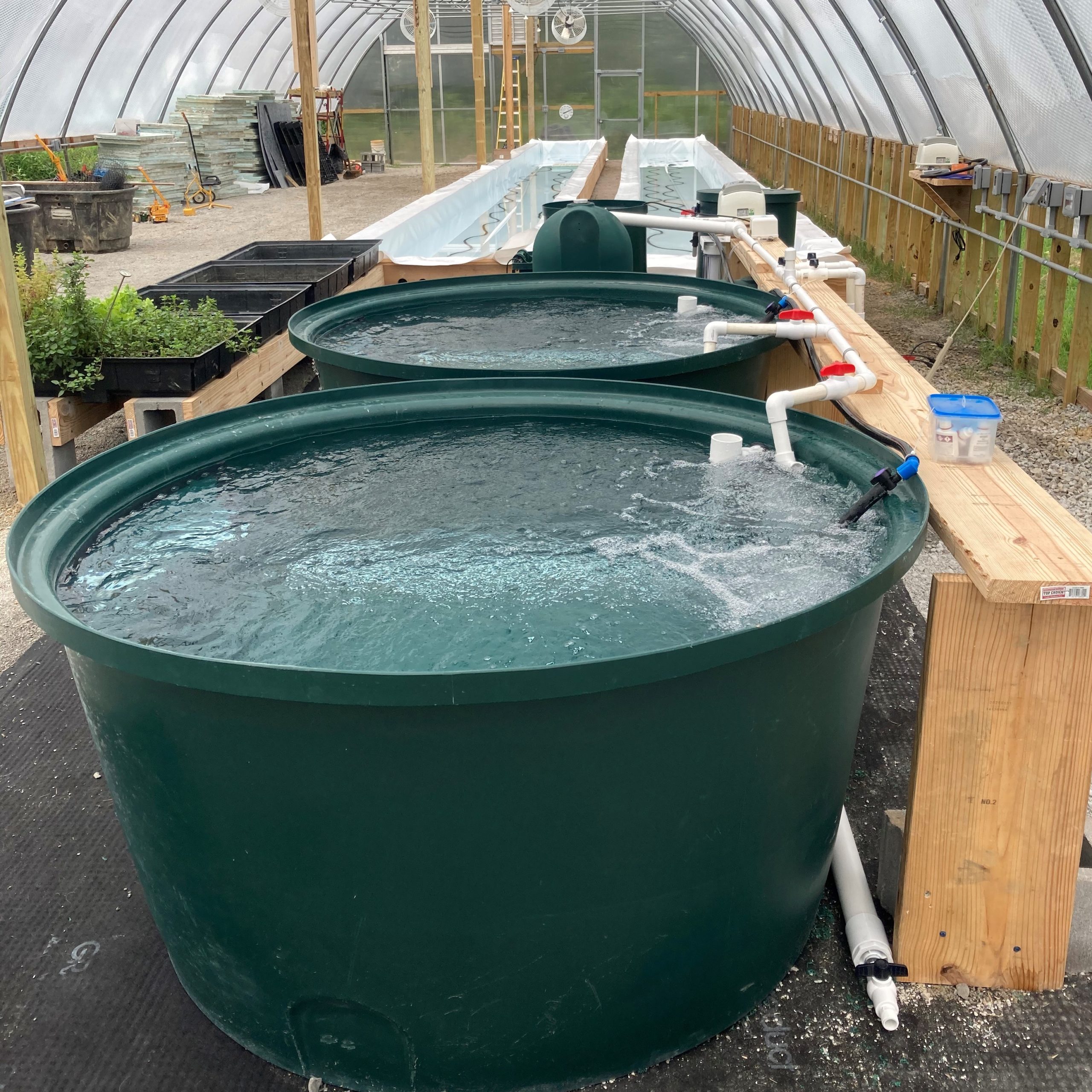
Source Image: www.theaquaponicsource.com
Alleviating Pressure on Wild Fish Stocks
As global demand for seafood continues to rise, wild fish stocks face increasing pressure from overfishing, habitat destruction, and climate change. Fish farming helps alleviate this pressure by providing an alternative source of fish protein, reducing the need for intensive fishing of wild populations.
Table 12: Role of Fish Farming in Conservation
| Conservation Benefit | Description | Impact |
|---|---|---|
| Conservation of Resources | Reduces overexploitation of wild fish stocks and protects marine ecosystems. | Preserves biodiversity and ecosystem services for future generations. |
| Restoration of Fish Populations | Supports stock enhancement and restoration efforts for depleted species. | Contributes to fisheries management and sustainable use of natural resources. |
| Sustainable Consumption | Promotes responsible consumption patterns and seafood choices. | Encourages consumers to support sustainable aquaculture practices and certified products. |
Key Point: Fish farming plays a critical role in conserving wild fish populations and marine ecosystems by reducing fishing pressure and promoting sustainable consumption practices.
Challenges in Fish Farming
While fish farming offers numerous benefits, it also faces various challenges related to disease management, overcrowding, feed sustainability, and environmental impacts. Addressing these challenges is essential for ensuring the long-term sustainability and resilience of the aquaculture industry.
Disease Management: Parasitic and Bacterial Infections
Disease outbreaks pose significant threats to fish health and productivity in aquaculture systems, leading to economic losses and environmental risks. Parasitic and bacterial infections are among the most common diseases affecting farmed fish, necessitating proactive disease management strategies and biosecurity measures.
Table 13: Common Fish Diseases in Aquaculture
| Disease | Causative Agent | Symptoms | Management Strategies |
|---|---|---|---|
| White Spot Disease | White spot syndrome virus (WSSV) | White spots on the exoskeleton, lethargy. | Strict biosecurity measures, quarantine, and disinfection protocols. |
| Bacterial Septicemia | Aeromonas, Pseudomonas, Vibrio species | Hemorrhages, fin rot, skin lesions. | Antibiotic treatments, vaccination, and water quality management. |
| Ichthyophthiriasis (Ich) | Ichthyophthirius multifiliis | White cysts on skin and gills, rapid breathing. | Salt baths, temperature manipulation, and parasite control. |
Key Point: Disease management is critical for maintaining fish health and preventing disease outbreaks in aquaculture systems, requiring a multifaceted approach including hygiene practices, vaccination, and treatment protocols.
Overcrowding Issues
Intensive aquaculture systems often involve high stocking densities to maximize production efficiency, leading to overcrowding and competition for resources among fish populations. Overcrowding can result in stress, poor water quality, increased disease susceptibility, and reduced growth rates, necessitating careful management and monitoring of stocking densities.
Table 14: Effects of Overcrowding in Fish Farming
| Impact | Consequences | Management Strategies |
|---|---|---|
| Stress | Increased aggression, reduced feeding, and growth rates. | Optimization of stocking densities and feeding regimes. |
| Disease Susceptibility | Higher incidence of infections and outbreaks. | Regular health monitoring and disease prevention measures. |
| Water Quality Degradation | Accumulation of waste products and pollutants. | Enhanced filtration, aeration, and water exchange systems. |
Key Point: Overcrowding in fish farming can lead to various negative impacts on fish health and productivity, highlighting the importance of maintaining optimal stocking densities and environmental conditions.
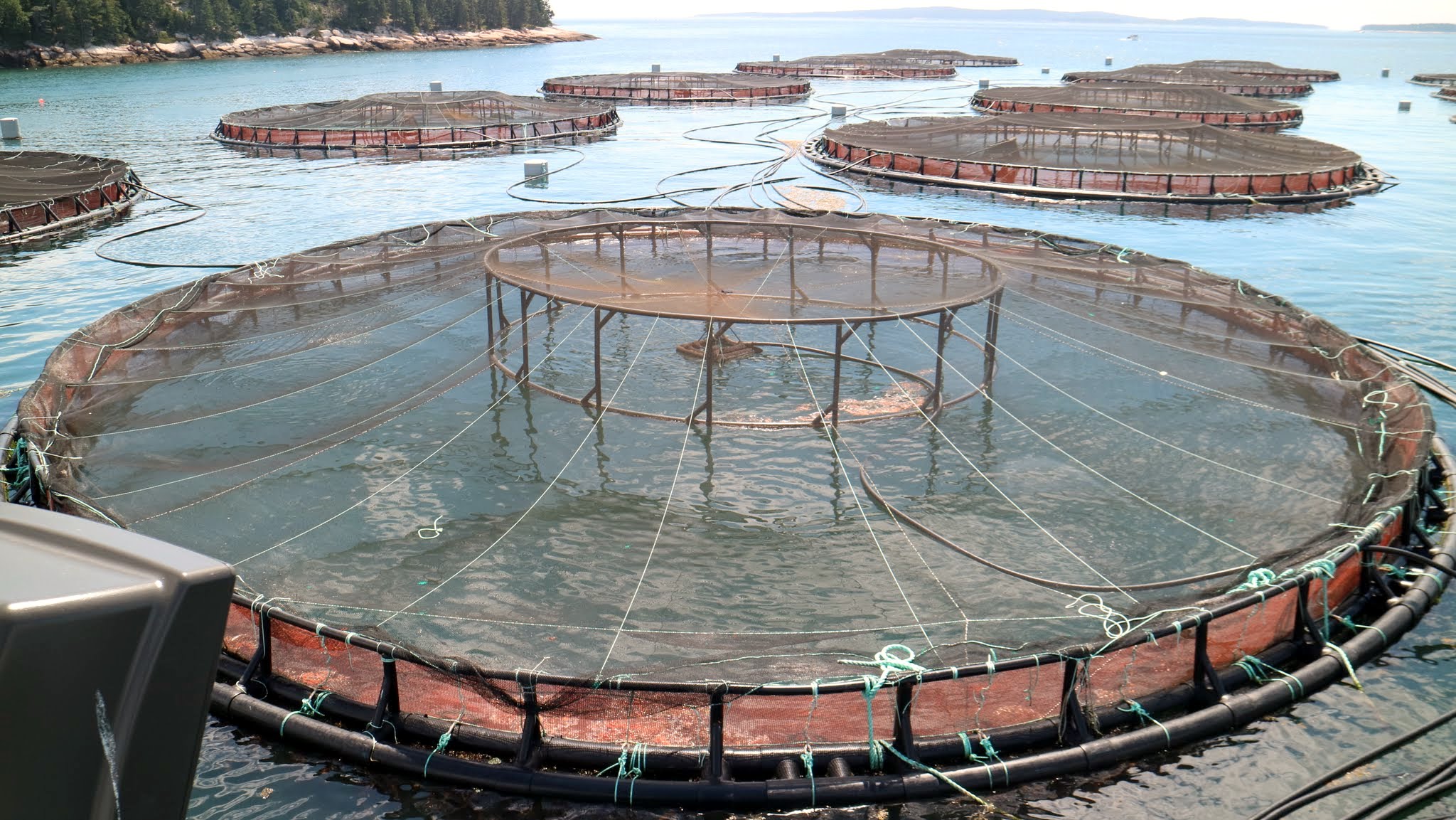
Source Image: www.themarthablog.com
Feed Management and Nutritional Challenges
Fish feed represents a significant cost and environmental burden in aquaculture operations, with concerns regarding its sustainability, nutritional quality, and environmental footprint. Balancing nutritional requirements, feed efficiency, and environmental sustainability is essential for promoting responsible aquaculture practices and minimizing resource wastage.
Table 15: Feed Management Strategies in Aquaculture
| Strategy | Description | Benefits |
|---|---|---|
| Alternative Ingredients | Replacement of fishmeal and fish oil with alternative protein and lipid sources. | Reduces reliance on wild fish stocks and promotes feed sustainability. |
| Nutritional Optimization | Formulation of diets tailored to specific species requirements and life stages. | Improves feed conversion ratios and fish growth performance. |
| Feed Conversion Efficiency | Monitoring of feeding rates and utilization efficiency to minimize waste. | Reduces feed costs and environmental impacts of aquaculture. |
Key Point: Effective feed management and nutritional optimization are essential for maximizing feed efficiency, minimizing environmental impacts, and ensuring the long-term sustainability of fish farming operations.
Fish Farming Techniques
Fish farming encompasses a diverse array of techniques and systems tailored to different species, environments, and production objectives. Understanding the various fish farming techniques is essential for selecting the most suitable approach based on site conditions, resource availability, and market demand.
Detailed Explanation of Cage Culture and Its Variations
Cage culture, also known as net pen culture, involves the rearing of fish in floating cages or pens installed in open bodies of water such as lakes, rivers, and coastal areas. This technique allows for intensive production in natural water bodies while minimizing land use and environmental impacts.
Table 16: Characteristics of Cage Culture
| Parameter | Description | Advantages |
|---|---|---|
| Infrastructure | Floating cages or pens made of netting or mesh materials. | Utilizes existing water bodies, minimal land requirements. |
| Water Circulation | Natural water currents and tides provide oxygenation and waste removal. | Enhances water quality and fish growth rates. |
| Species Compatibility | Suitable for a wide range of freshwater and marine species. | Allows for diverse species selection and market flexibility. |
Key Point: Cage culture is a versatile and widely adopted fish farming technique suitable for various aquatic environments, offering opportunities for intensive production and market diversification.
Overview of Pond Culture Techniques
Pond culture, also known as earthen pond farming, is one of the oldest and most traditional methods of fish farming, dating back to ancient civilizations. This technique involves the construction and management of man-made or natural ponds for fish rearing, utilizing water management practices to optimize production.
Table 17: Features of Pond Culture
| Parameter | Description | Advantages |
|---|---|---|
| Pond Construction | Excavated or constructed ponds lined with clay or synthetic liners. | Adaptable to various landscapes and soil types. |
| Water Management | Control of water inflow, outflow, and quality through dikes, drains, and pumps. | Allows for optimal environmental conditions and disease control. |
| Species Selection | Suited for freshwater fish species tolerant of local water conditions. | Facilitates local adaptation and natural breeding. |
Key Point: Pond culture remains a popular and effective fish farming technique, particularly in rural and developing regions, offering simplicity, low investment costs, and suitability for small-scale operations.
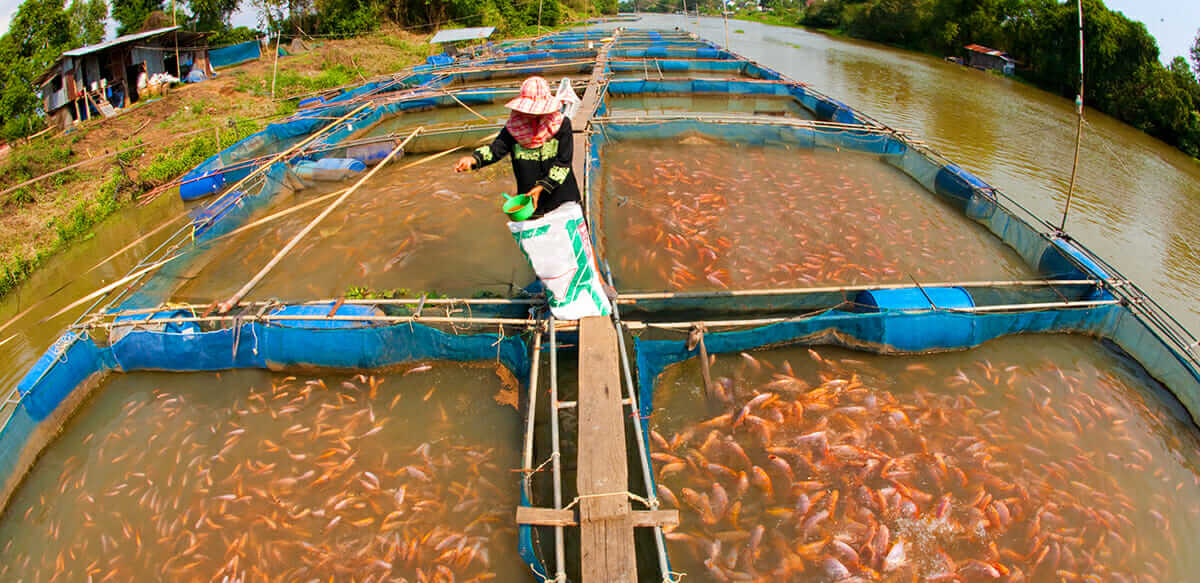
Source Image: modernfarmer.com
Introduction to Recirculating Aquaculture Systems (RAS)
Recirculating aquaculture systems (RAS) represent a modern and innovative approach to fish farming, characterized by the recycling and treatment of water within closed-loop systems. RAS offer precise control over environmental parameters, water quality, and disease management, allowing for intensive production in land-based facilities.
Table 18: Components of Recirculating Aquaculture Systems
| Component | Description | Function |
|---|---|---|
| Fish Tanks | Enclosed tanks or raceways for fish rearing and growth. | Provides controlled environment and space for fish. |
| Filtration Systems | Mechanical, biological, and chemical filters for water treatment. | Removes solids, nutrients, and pollutants from water. |
| Water Treatment Equipment | UV sterilizers, ozonators, and biofilters for disinfection and purification. | Ensures water quality and disease control. |
Key Point: Recirculating aquaculture systems offer numerous advantages, including water efficiency, biosecurity, and environmental sustainability, making them increasingly popular in commercial fish farming operations.
Popular Fish Species in Fish Farming
Fish farming encompasses a wide variety of species, each with its characteristics, requirements, and suitability for different farming environments and markets. Understanding the characteristics of popular fish species is essential for selecting the most appropriate species based on production objectives, site conditions, and market demand.
Characteristics of Tilapia, Salmon, Catfish, Trout, Carp
Tilapia, salmon, catfish, trout, and carp are among the most commonly farmed fish species worldwide, prized for their adaptability, fast growth rates, and market demand. Each species has unique characteristics and requirements, making them suitable for different farming environments and production systems.
Table 19: Characteristics of Popular Fish Species
| Species | Characteristics | Farming Environments |
|---|---|---|
| Tilapia | Fast-growing, tolerant of diverse water conditions. | Freshwater ponds, cages, and RAS systems. |
| Salmon | High-value species prized for their flavor and texture. | Offshore pens, RAS facilities, and hatcheries. |
| Catfish | Hardy species with robust growth and disease resistance. | Earthen ponds, cages, and recirculating systems. |
| Trout | Cold-water species valued for their delicate flavor. | Freshwater streams, raceways, and hatcheries. |
| Carp | Versatile species adaptable to various farming conditions. | Ponds, lakes, and intensive culture systems. |
Key Point: Tilapia, salmon, catfish, trout, and carp are popular fish species in aquaculture, each offering unique advantages and opportunities for commercial production and market diversification.

Source Image: www.reeladventurefishing.com
Regulations and Standards in Fish Farming
Fish farming is subject to various regulations, standards, and certification programs aimed at ensuring environmental sustainability, food safety, and product quality. Compliance with these regulations is essential for maintaining market access, consumer trust, and industry credibility.
Analysis of Environmental Regulations Impacting Fish Farming
Environmental regulations governing fish farming operations vary widely across countries and regions, reflecting local environmental conditions, regulatory frameworks, and stakeholder interests. These regulations aim to minimize the environmental impact of aquaculture activities while promoting sustainable practices and resource management.
Table 20: Environmental Regulations in Fish Farming
| Regulation | Description | Compliance Requirements |
|---|---|---|
| Water Quality Standards | Limits on nutrient discharges, dissolved oxygen levels, and pollutant concentrations. | Monitoring, reporting, and treatment of effluents. |
| Habitat Protection Measures | Restrictions on aquaculture development in sensitive habitats such as mangroves and wetlands. | Environmental impact assessments and mitigation measures. |
| Site Selection Criteria | Criteria for selecting suitable locations for aquaculture operations to minimize environmental risks. | Zoning regulations, land use planning, and stakeholder consultations. |
Key Point: Environmental regulations play a critical role in shaping the development and expansion of fish farming activities, balancing economic interests with environmental conservation objectives.
Discussion on Food Safety Standards
Food safety standards and regulations govern the production, processing, and distribution of fish products, ensuring consumer protection and public health. Compliance with food safety standards is essential for maintaining product quality, market access, and consumer confidence in fish farming products.
Table 21: Food Safety Standards in Fish Farming
| Standard | Description | Compliance Requirements |
|---|---|---|
| Hazard Analysis and Critical Control Points (HACCP) | Systematic approach to identifying and controlling food safety hazards. | Implementation of HACCP plans, monitoring, and documentation. |
| Good Aquaculture Practices (GAP) | Guidelines for responsible aquaculture practices to minimize contamination risks. | Adherence to biosecurity measures, hygiene practices, and quality assurance protocols. |
| Traceability Systems | Systems for tracing the origin and movement of fish products throughout the supply chain. | Record-keeping, labeling, and product tracking systems. |
Key Point: Food safety standards ensure the quality and safety of fish products from farm to fork, protecting consumers and enhancing market confidence in aquaculture products.
Overview of Certification Programs Ensuring Quality
Certification programs such as Aquaculture Stewardship Council (ASC) and GlobalG.A.P. provide third-party verification of aquaculture practices, environmental performance, and product quality. Certification demonstrates compliance with rigorous standards and best practices, helping fish farmers differentiate their products in the market and access premium markets.
Table 22: Certification Programs in Fish Farming
| Certification Program | Description | Requirements and Assessment Criteria |
|---|---|---|
| Aquaculture Stewardship Council (ASC) | Certification scheme for responsible aquaculture practices and environmental performance. | Compliance with ASC standards, third-party audits, and annual assessments. |
| GlobalG.A.P. | Certification program for good agricultural practices in aquaculture production. | Adherence to GlobalG.A.P. standards, risk assessments, and on-site inspections. |
| Organic Certification | Certification for organic fish farming practices, emphasizing environmental sustainability and natural inputs. | Compliance with organic farming regulations, soil and water management, and product labeling. |
Key Point: Certification programs play a crucial role in verifying the sustainability, quality, and integrity of fish farming products, enhancing consumer trust and market access for certified producers.
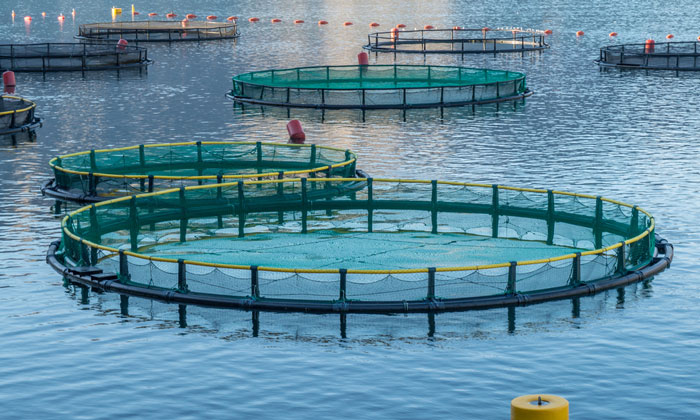
Source Image: www.newfoodmagazine.com
Innovation in Fish Farming
Innovation is driving significant advancements in the fish farming industry, ranging from genetic improvement programs and alternative feeds to the integration of technology and automation. These innovations hold the promise of improving productivity, sustainability, and efficiency in aquaculture operations.
Genetic Improvement Programs and Their Importance
Genetic improvement programs aim to enhance desirable traits such as growth rate, disease resistance, and feed efficiency in farmed fish populations through selective breeding and genetic selection. These programs contribute to the development of improved fish strains tailored to specific farming environments and production objectives.
Table 23: Objectives of Genetic Improvement Programs
| Objective | Description | Techniques and Strategies |
|---|---|---|
| Growth Enhancement | Selective breeding for fast-growing and high-yielding fish strains. | Family selection, pedigree breeding, and marker-assisted selection. |
| Disease Resistance | Identification of genetic markers associated with disease resistance traits. | Genomic selection, challenge testing, and selective breeding for disease resistance. |
| Feed Efficiency | Selection for fish with efficient feed conversion ratios and nutrient utilization. | Feed conversion trials, genetic correlation analysis, and genomic selection for feed efficiency. |
Key Point: Genetic improvement programs play a crucial role in enhancing the performance, resilience, and sustainability of farmed fish populations, supporting the long-term growth and competitiveness of the aquaculture industry.
Alternative Feeds and Their Role in Sustainable Farming
The development of alternative feeds represents a key innovation in aquaculture, offering sustainable alternatives to traditional fishmeal and fish oil derived from wild fish stocks. Alternative feeds utilize plant-based proteins, microbial sources, and insect meal to reduce reliance on marine resources and minimize environmental impacts.
Table 24: Types of Alternative Feeds
| Feed Ingredient | Description | Benefits |
|---|---|---|
| Plant Proteins | Soybean meal, corn gluten meal, and canola meal. | Renewable, cost-effective, and widely available. |
| Microbial Sources | Single-cell proteins such as yeast and bacteria. | High protein content, rapid growth, and scalability. |
| Insect Meal | Black soldier fly larvae, mealworms, and cricket meal. | Nutrient-rich, sustainable, and digestible. |
Key Point: Alternative feeds offer sustainable and cost-effective solutions for meeting the nutritional requirements of farmed fish, reducing pressure on wild fish stocks and promoting resource efficiency in aquaculture.
Integration of Technology: Sensors, IoT, etc.
The integration of technology and digital innovations is revolutionizing fish farming practices, enabling real-time monitoring, data analytics, and automation of critical production processes. Sensors, Internet of Things (IoT) devices, and artificial intelligence (AI) systems are being deployed to optimize feed management, water quality control, and disease detection in aquaculture operations.
Table 25: Technologies Transforming Fish Farming
| Technology | Description | Applications |
|---|---|---|
| Water Quality Sensors | Devices for monitoring parameters such as temperature, pH, and dissolved oxygen. | Real-time water quality monitoring and control. |
| Feeding Systems | Automated feeders and feed delivery systems with precision feeding capabilities. | Optimization of feed utilization and growth rates. |
| Disease Detection Tools | Molecular diagnostics, imaging technologies, and AI algorithms for disease surveillance. | Early detection of pathogens, rapid response, and preventive measures. |
Key Point: Technological innovations are enhancing productivity, efficiency, and sustainability in fish farming operations, empowering farmers with tools for precision management and decision-making.
Market Trends and Opportunities
The global aquaculture industry is experiencing rapid growth and transformation, driven by evolving consumer preferences, market dynamics, and technological advancements. Understanding market trends and opportunities is essential for positioning fish farming enterprises for success and growth in a competitive marketplace.
Global Demand Trends for Aquaculture Products
The demand for aquaculture products is on the rise, fueled by population growth, rising incomes, and shifting dietary preferences towards healthier and sustainably sourced foods. Seafood consumption is expected to continue increasing, driving expansion in aquaculture production and market opportunities worldwide.
Table 26: Global Consumption Trends for Aquaculture Products
| Product Category | Description | Growth Drivers |
|---|---|---|
| Finfish | Freshwater and marine species such as tilapia, salmon, and catfish. | Increasing demand for protein-rich and omega-3 fatty acids. |
| Shellfish | Mollusks, crustaceans, and bivalves including shrimp, oysters, and mussels. | Growing popularity of seafood delicacies and sushi. |
| Seaweed | Edible seaweeds and algae for culinary and nutritional purposes. | Rising awareness of health benefits and sustainable sourcing. |
Key Point: Aquaculture products are in high demand globally, driven by changing consumer preferences, health considerations, and the need for sustainable protein sources, presenting lucrative market opportunities for fish farming enterprises.
Emerging Markets and Their Potential
Emerging markets in Asia, Africa, and Latin America represent significant growth opportunities for the aquaculture industry, driven by urbanization, economic development, and increasing demand for seafood. These markets offer vast untapped potential for expanding production, diversifying product offerings, and capturing new consumer segments.
Table 27: Emerging Aquaculture Markets
| Region | Description | Growth Drivers |
|---|---|---|
| Southeast Asia | Rapidly growing economies such as Vietnam, Indonesia, and Thailand. | Rising incomes, urbanization, and seafood consumption trends. |
| Sub-Saharan Africa | Countries with abundant freshwater resources and untapped aquaculture potential. | Economic development, food security initiatives, and investment incentives. |
| Latin America | Coastal nations with rich marine biodiversity and aquaculture traditions. | Market liberalization, export opportunities, and government support. |
Key Point: Emerging markets offer attractive opportunities for fish farming investments and market expansion, fueled by demographic trends, economic growth, and changing consumer preferences for seafood.
Value-Added Products and Their Market Reach
Value-added products such as processed seafood, ready-to-eat meals, and premium branded products are gaining popularity among consumers seeking convenience, quality, and health benefits. These products offer higher profit margins and market differentiation opportunities for fish farming enterprises, catering to diverse consumer preferences and market segments.
Table 28: Examples of Value-Added Aquaculture Products
| Product Category | Description | Market Trends |
|---|---|---|
| Smoked Salmon | Premium smoked salmon fillets and slices for gourmet cuisine. | Growing demand for artisanal and specialty seafood products. |
| Fish Jerky | Protein-rich snack bars and dried fish products for on-the-go consumption. | Increasing popularity of healthy and portable snacks. |
| Canned Seafood | Canned tuna, sardines, and mackerel in various flavors and sauces. | Convenience, shelf-stability, and export potential in global markets. |
Key Point: Value-added products offer opportunities for diversification, branding, and market differentiation in the aquaculture industry, tapping into consumer trends for convenience, quality, and health-conscious choices.
Sustainable Practices in Fish Farming
Sustainability lies at the heart of modern fish farming practices, encompassing environmental, social, and economic dimensions. Embracing sustainable practices is essential for ensuring the long-term viability and resilience of the aquaculture industry, balancing economic growth with environmental conservation and social responsibility.
Explanation of Integrated Multi-Trophic Aquaculture (IMTA)
Integrated multi-trophic aquaculture (IMTA) represents an innovative approach to fish farming that mimics natural ecosystems by combining multiple species in a symbiotic relationship. IMTA systems utilize nutrient cycling and ecological interactions to optimize resource utilization, minimize waste, and enhance productivity while reducing environmental impacts.
Table 29: Components of Integrated Multi-Trophic Aquaculture
| Trophic Levels | Description | Functions |
|---|---|---|
| Finfish | Predatory species such as salmon, tilapia, or sea bass. | Primary source of protein and economic value. |
| Shellfish | Filter-feeding organisms including mussels, oysters, and clams. | Nutrient removal, water filtration, and benthic habitat enhancement. |
| Seaweeds | Macroalgae species such as kelp, seaweed, and seaweed. | Nutrient assimilation, oxygen production, and habitat provision. |
Key Point: Integrated multi-trophic aquaculture offers a sustainable and holistic approach to fish farming, promoting ecosystem resilience, resource efficiency, and social benefits through the integration of diverse species and trophic levels.
Description of Closed-Loop Systems for Sustainability
Closed-loop aquaculture systems, also known as recirculating aquaculture systems (RAS), are designed to minimize water usage and waste discharge by continuously recycling and treating water within a closed-loop environment. RAS utilize advanced filtration, biofiltration, and water treatment technologies to maintain optimal water quality and support intensive fish production with minimal environmental impacts.
Table 30: Components of Closed-Loop Aquaculture Systems
| System Component | Description | Functions |
|---|---|---|
| Fish Tanks | Enclosed tanks or raceways for fish rearing and growth. | Provides controlled environment and space for fish. |
| Filtration Systems | Mechanical, biological, and chemical filters for water treatment. | Removes solids, nutrients, and pollutants from water. |
| Water Treatment Units | UV sterilizers, ozonators, and biofilters for disinfection and purification. | Ensures water quality and disease control. |
Key Point: Closed-loop aquaculture systems offer significant advantages in terms of water conservation, waste management, and environmental sustainability, making them increasingly popular in land-based fish farming operations.
Introduction to Organic Fish Farming Practices
Organic fish farming practices emphasize natural inputs, biodiversity conservation, and ecological stewardship, aiming to minimize environmental impacts and promote animal welfare and product quality. Organic certification programs set stringent standards for organic aquaculture production, covering feed ingredients, farming practices, and product labeling requirements.
Table 31: Principles of Organic Fish Farming
| Organic Principle | Description | Practices and Requirements |
|---|---|---|
| Natural Inputs | Use of organic feed ingredients and natural supplements. | Prohibition of synthetic chemicals and genetically modified organisms (GMOs). |
| Environmental Stewardship | Protection of water quality, biodiversity, and ecosystem health. | Implementation of habitat conservation measures and pollution prevention strategies. |
| Animal Welfare | Provision of adequate space, water quality, and diet for fish health and well-being. | Compliance with animal welfare standards and stocking density limits. |
Key Point: Organic fish farming practices promote sustainability, environmental responsibility, and consumer trust through the adoption of organic principles, natural inputs, and holistic management approaches.
Case Studies
Examination of successful fish farming operations globally provides insights into best practices, innovation, and challenges faced by fish farmers in different regions and production systems. Case studies highlight successful strategies, innovative technologies, and lessons learned from real-world experiences in the aquaculture industry.
Case Study 1: Sustainable Shrimp Farming in Ecuador
Ecuador is a leading producer of farmed shrimp, known for its sustainable aquaculture practices and commitment to environmental conservation. Shrimp farming in Ecuador is primarily conducted in extensive pond systems with integrated mangrove conservation, water treatment, and community engagement initiatives.
Table 32: Success Factors in Sustainable Shrimp Farming
| Success Factor | Description | Strategies and Practices |
|---|---|---|
| Mangrove Conservation | Preservation of mangrove ecosystems as natural buffers and habitat for shrimp farms. | Zoning regulations, mangrove restoration, and sustainable land use planning. |
| Water Treatment Systems | Implementation of recirculating systems and biofilters for water purification. | Biological filtration, sedimentation ponds, and constructed wetlands for effluent treatment. |
| Community Engagement | Collaboration with local communities, NGOs, and government agencies for sustainable development. | Training programs, capacity building, and income-generating projects for coastal communities. |
Key Point: Sustainable shrimp farming in Ecuador demonstrates the importance of ecosystem-based management, water treatment, and stakeholder engagement in achieving environmental and social sustainability in aquaculture.
Case Study 2: Integrated Trout Farming in Norway
Norway is renowned for its integrated trout farming operations, characterized by land-based recirculating systems and sustainable production practices. Trout farming in Norway utilizes advanced technology, genetics, and water treatment to optimize production efficiency while minimizing environmental impacts and disease risks.
Table 33: Innovations in Integrated Trout Farming
| Innovation | Description | Applications |
|---|---|---|
| Recirculating Systems | Closed-loop aquaculture systems with advanced filtration and biofiltration technology. | Water conservation, disease control, and intensive production. |
| Genetic Improvement | Selective breeding programs for disease-resistant and fast-growing trout strains. | Genomic selection, family-based breeding, and marker-assisted selection. |
| Digital Monitoring Tools | Sensors, IoT devices, and AI algorithms for real-time monitoring and management. | Remote monitoring, data analytics, and predictive modeling for production optimization. |
Key Point: Integrated trout farming in Norway showcases the integration of technology, genetics, and management practices to achieve sustainable and efficient production in land-based aquaculture systems.
Case Study 3: Organic Salmon Farming in Scotland
Scotland is a pioneer in organic salmon farming, renowned for its pristine marine environments, stringent organic standards, and premium quality products. Organic salmon farming in Scotland emphasizes low stocking densities, natural feed ingredients, and environmental stewardship to produce high-value, certified organic salmon for domestic and international markets.
Table 34: Key Features of Organic Salmon Farming
| Key Feature | Description | Practices and Requirements |
|---|---|---|
| Low Stocking Densities | Limited stocking densities to minimize environmental impacts and stress on fish. | Space allocation, carrying capacity assessments, and environmental impact assessments. |
| Natural Feed Ingredients | Use of organic feed ingredients such as fishmeal and fish oil from sustainable sources. | Certification of feed suppliers, traceability, and quality assurance of feed ingredients. |
| Environmental Stewardship | Implementation of habitat enhancement measures and pollution prevention strategies. | Benthic monitoring, effluent control, and ecosystem-based management approaches. |
Key Point: Organic salmon farming in Scotland exemplifies the integration of organic principles, environmental stewardship, and premium quality standards to produce sustainable and high-value salmon products for discerning consumers.
Future Prospects of Fish Farming
The future of fish farming holds immense promise and potential, driven by technological innovation, market demand, and sustainability imperatives. Embracing emerging trends and addressing challenges will be crucial for realizing the full benefits of aquaculture in contributing to global food security, economic development, and environmental conservation.
Analysis of Technological Advancements in the Industry
Technological advancements such as genetic improvement programs, precision aquaculture, and digitalization are reshaping the fish farming industry, enabling more efficient, sustainable, and profitable production systems. These innovations offer opportunities for optimizing resource use, minimizing environmental impacts, and enhancing product quality and market competitiveness.
Table 35: Emerging Technologies in Fish Farming
| Technology | Description | Applications |
|---|---|---|
| Genomic Selection | DNA-based selection methods for identifying desirable traits in farmed fish. | Disease resistance, growth performance, and product quality improvement. |
| Precision Aquaculture | IoT sensors, automated systems, and AI algorithms for precision management. | Feed optimization, water quality control, and disease monitoring. |
| Aquatic Biotechnology | Bioremediation, biofuel production, and bioprospecting for value-added products. | Nutrient recycling, waste treatment, and biotechnological applications. |
Key Point: Technological advancements hold the potential to revolutionize fish farming practices, driving efficiency, sustainability, and innovation across the aquaculture value chain.
Importance of Adopting Sustainable Practices for Future Growth
The adoption of sustainable practices is essential for the long-term growth and resilience of the fish farming industry, ensuring environmental stewardship, social responsibility, and economic viability. Embracing sustainability principles can enhance market access, consumer trust, and industry competitiveness while safeguarding natural resources and ecosystems for future generations.
Table 36: Benefits of Sustainable Fish Farming
| Benefit | Description | Implications |
|---|---|---|
| Environmental Stewardship | Conservation of water resources, biodiversity, and ecosystem health. | Mitigation of pollution, habitat restoration, and climate resilience. |
| Economic Viability | Cost savings, market differentiation, and long-term profitability. | Enhanced market access, brand reputation, and investor confidence. |
| Social Responsibility | Employment generation, community development, and food security. | Livelihood opportunities, poverty alleviation, and social cohesion. |
Key Point: Sustainable fish farming practices offer multiple benefits in terms of environmental protection, economic development, and social well-being, providing a pathway towards a more resilient and equitable food system.
Potential Impacts of Climate Change on Fish Farming Practices
Climate change poses significant challenges and risks to fish farming operations, including changing water temperatures, extreme weather events, and ocean acidification. Adapting to climate change impacts will require proactive management strategies, technological innovations, and policy interventions to enhance resilience and sustainability in aquaculture.
Table 37: Climate Change Adaptation Strategies in Fish Farming
| Adaptation Measure | Description | Implementation |
|---|---|---|
| Genetic Adaptation | Selection of climate-resilient fish strains and breeding for heat tolerance. | Genomic selection, selective breeding, and crossbreeding programs. |
| Infrastructure Upgrades | Reinforcement of aquaculture infrastructure to withstand extreme weather events. | Elevated structures, stormwater management, and flood control measures. |
| Water Management | Adaptive management of water resources and temperature control strategies. | Thermal screens, aeration systems, and habitat restoration projects. |
Key Point: Climate change adaptation is essential for mitigating risks and vulnerabilities in fish farming operations, requiring coordinated efforts across sectors, stakeholders, and scales to build resilience and sustainability.
In conclusion, fish farming plays a vital role in global food security, economic development, and environmental sustainability, providing a scalable and efficient solution to meet the growing demand for seafood. By embracing innovation, adopting sustainable practices, and addressing challenges, the aquaculture industry can continue to thrive and contribute to a more resilient and equitable food system. It is essential for stakeholders, policymakers, and consumers to collaborate and support responsible fish farming practices that balance economic growth with environmental conservation and social responsibility. As we look to the future, the potential of fish farming to nourish communities, support livelihoods, and conserve natural resources remains immense, underscoring the importance of collective action and commitment to building a sustainable and inclusive aquaculture sector for generations to come.

